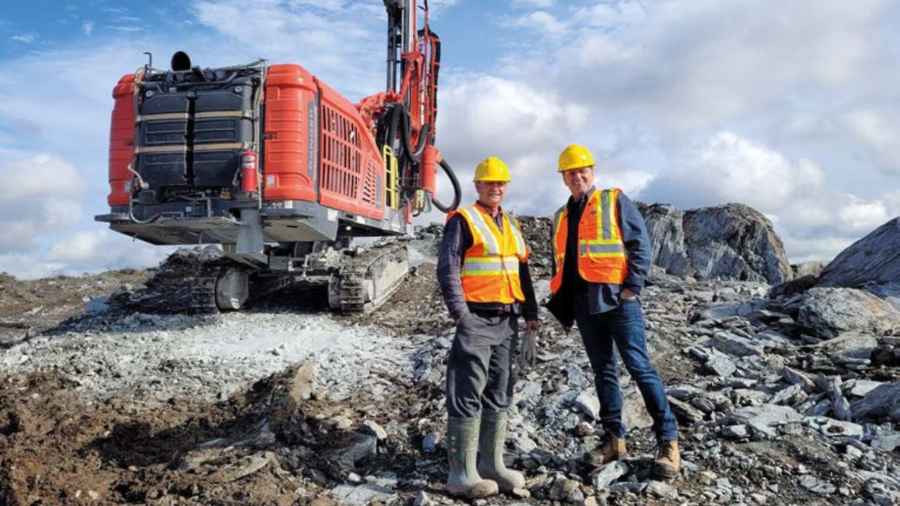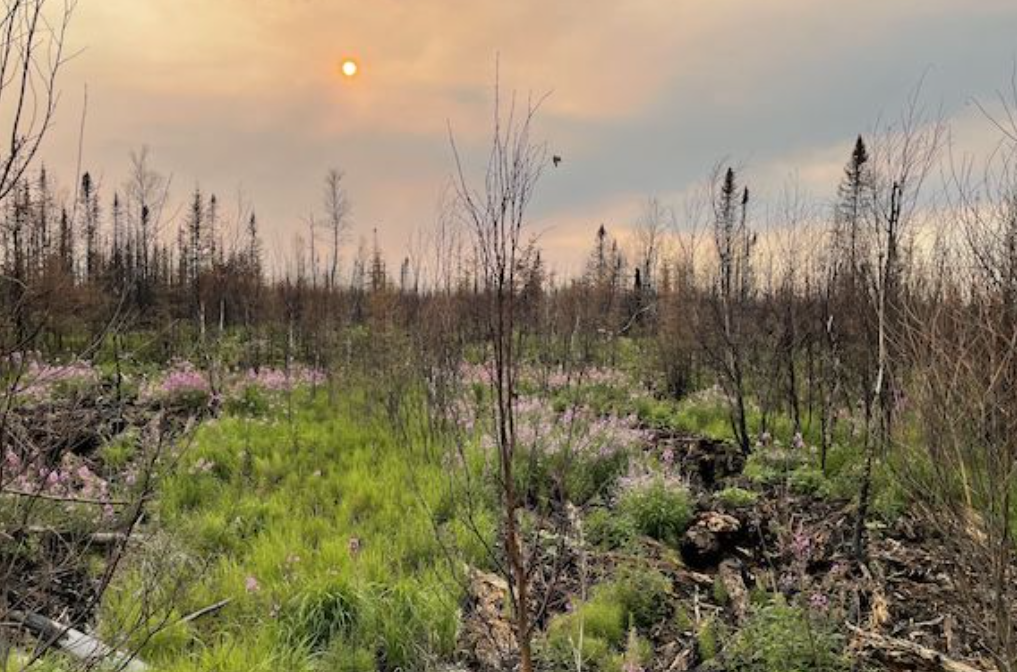Mixed messages in Mexico

Top: Almaden Minerals’ Ixtaca project, in Puebla state. Credit: Almaden Minerals
What a difference a year makes. In December, 2018, Vancouver-based Almaden Minerals released a feasibility study on its Ixtaca gold-silver deposit in Mexico’s Puebla state and Almaden president and CEO Morgan Poliquin expressed confidence that the company would be making a production decision by the end of 2019.
But as 2019 drew to a close, the project was stalled. Mexico’s environmental agency, the Secretaria de Medio Ambiente y Recursos Naturales (SEMARNAT), had halted its review of Ixtaca due to a lawsuit against the government of Mexico based on claims Almaden staked in 2001.
The suit was filed by an ejido, a group of communal landowners, based dozens of kilometres from the proposed mine. The community of about 150 people contends that Mexico’s mining laws are unconstitutional because they were not consulted when the claims were staked. In April, a lower court in Puebla state agreed, and suspended Almaden’s claims until consultation is completed. That decision is being appealed by the Mexican Congress, the Senate, the Secretary of Economy and Mining Authorities and, as an affected third party to the lawsuit, Almaden.
“It’s an attack on the institutions of Mexico and we think there’s an international NGO behind it,” Poliquin says. “We staked these claims 18 years ago according to the law of the land. If this suit succeeds it would suggest that every claim in Mexico is unconstitutional.”
None of the 12 communities within the Ixtaca project area are part of the lawsuit.
The suit may be frivolous and vexatious, but it is a setback for a single-asset developer like Almaden. It also adds to the growing perception among many investors that Mexico is becoming a risky jurisdiction for mining ventures.
“I have buy-side clients and Mexico is a no-go zone for them,” says Ian Parkinson, managing director, mining research, with GMP Securities in Toronto. “There’s perceived risk and investors are looking for extremely safe jurisdictions.”
Those perceptions have been fuelled by a number of things. There was the union-backed, illegal blockade of Torex Gold Resources’s ELG Mine in Guerrero state that lasted from November 2017 until April 2018. There was the 2018 election of left-wing president Manuel Lopez Obrador, whose government cancelled a number of infrastructure projects and suspended auctions for energy exploration contracts for a three-year period.
After years of murderous rivalry between drug cartels, there are well-founded concerns over personal security – highlighted yet again in early November by the roadside massacre of several Mormon families in the state of Sonora – an important mining jurisdiction.
Despite the spate of bad news, executives of several Canadian exploration and development companies say Mexico remains open to mining ventures and Parkinson agrees. “Mexico is a very mining-friendly country,” he says. “Getting permits and projects developed is not a problem.”
And, in an interview with Canadian Mining Journal, Mexico’s ambassador to Canada, Juan José Gomez Camacho insisted the country welcomes investment in mining and sees the industry as a major contributor to the economy. (See sidebar on this page.)
Quick permitting
Vancouver-based Minera Alamos is currently developing two properties in Mexico, its Santana gold project in Sonora and it La Fortuna gold-silver-copper project in Durango. Santana, located a 3.5-hour drive south of the state capital of Hermosillo, is the more advanced and could be in production as early as mid-2020.
“Even with the change of government we got state and federal permits in a little over a year,” says president Doug Ramshaw. “We were surprised how quickly it happened.”
The company is moving forward without having released a feasibility study, but planned to file its first resource estimate early in 2020. CEO Darren Koningen says construction of an open-pit, heap-leach operation will take six to seven months and cost only $10 million.
The low cost is due, in part, to a low strip ratio of 1.5:1. The company plans to use outside contractors to build and operate the mine and it won’t be processing and pouring doré on-site. Instead, gold-bearing material from the leach pads will be shipped to the U.S. to be refined.
“We’re finding elegant ways to cut costs, not corners,” Ramshaw says.
Vancouver-based SilverCrest Metals is also developing a gold project in Sonora. Its 14-sq.-km Las Chispas property is located 180 km northeast of Hermosillo. Last May, the company released a preliminary economic assessment (PEA) that forecasted average annual production of 55,700 oz. of gold and 5.4 million oz. of silver over an initial mine life of 8.5 years.
In July, SEMARNAT conditionally approved a 3,000-tonne/day underground mine and a conventional processing facility with dry-stack tailings and underground backfill. “We’ve had no issues at all in terms of geopolitical risk,” says Jacy Zerb, SilverCrest’s manager of investor relations. “In terms of permitting, it’s been great.”
Case in point: the company initially received permission to construct a 3- by 3-metre decline to conduct underground drilling, but realized it would need a 4.5- by 4.5-metre decline for production. SilverCrest applied for a permit for the larger decline, which was granted within two weeks.
Since last February, the company has pushed the decline 1 km below ground and sub-surface drilling has revealed higher grade ore than the PEA resource, which was based on drilling from surface. Zerb adds that SilverCrest hopes to have the mine in production by late 2021 or early the following year. In the interim, it will be stockpiling ore and currently has an estimated $150 million worth stored on surface.
Community support
Community support is an essential first step to moving mining projects forward and SilverCrest has worked hard to win local backing. Part of the Las Chispas project is located on land controlled by an ejido and, among other things, SilverCrest has hired between 40 and 50 workers from that community.
“If you can build a relationship from the start, it eases permitting and you can get a mine up and running faster,” Zerb says.
Jason Simpson, president and CEO of Vancouver-based Orla Mining, says getting permission from local communities is as important as obtaining government permits. “We recognize that part of our development plans have to include sharing the benefits with those who’ve given us permission to dig a hole in their backyard,” Simpson says.
Orla’s Camino Rojo gold and silver project in the state of Zacatecas, was discovered in 2007. While a local road was being built, geologists spotted traces of gold in the material from an aggregate pit. Subsequent exploration revealed an orebody containing an estimated 9.5 million oz. of gold in global resources. Just over 2 million oz. is contained in oxide ore to a depth of 120 metres. The remaining 7.3 million oz. gold (in measured and indicated resources) is in sulphide ore below that.
In July, Orla released a feasibility study that pegged proven and probable reserves at 1 million oz. gold and 20.1 million oz. silver in 44 million tonnes of oxide ore grading 0.73 g/t gold and 14.2 g/t silver. Capital costs for a heap leach operation were estimated at US$123 million. The heap leach gold and silver in solution would be processed in a Merrill-Crowe recovery plant to yield gold and silver doré.
The open-pit mine would be capable of processing 18,000 tonnes of ore per day and, at that rate, would produce 97,000 oz. of gold annually over seven years. And the capital cost of building it would be recovered in three years, given precious metal prices of US$1,250 per oz. for gold and US$17 per oz. for silver. At a 5% discount rate, the study pegged the project’s after-tax net present value (NPV) at US$142 million and its internal rate of return (IRR) at 28.7%.
Good corporate citizen
Almaden Minerals has been working in Puebla state for nearly 20 years and has been a quintessentially good corporate citizen. The company was well on its way to a production decision before being blindsided by the lawsuit against the Mexican government.
The company staked 7.2 sq. km in 2001 and conducted field work until 2010 when it zeroed in on a promising five hectare target and began drilling. Over the next several years, Almaden drilled 160,000 metres and delineated a deposit containing proven and probable reserves of 1.4 million oz. of gold and 85.2 million oz. of silver in 73.1 million tonnes at a diluted grade of 0.59 g/t gold and 36.3 g/t silver, according to the feasibility study released last December.
The study envisions an open-pit mine producing an average of 90,800 oz. of gold and 6.14 million oz. of silver annually over 14 years. The study put the initial capital cost at US$174 million, repayable in 1.9 years based on an IRR of 42%. The project has an NPV of US$310 million (at a 5% discount rate).
“We have strong community support for the project,” says Poliquin, adding the company has gone beyond the legal requirements and met international standards.
Almaden has hosted nine community meetings that attracted over 4,100 people and it organized 46 forums in which community members were able to question experts on issues such as Mexican mining law, mineral processing and water consumption in mining. Almaden has also hired 70 local residents and, among other things, has trained some of them to operate drills because the company does its own drilling rather than relying on outside contractors.
Nevertheless, a community located at the extreme southeast corner of Almaden’s claims, and a considerable distance from the area of impact, has opposed the project. Poliquin notes that the community in question is quite poor, but adds they can be “sophisticated in terms of their international funding sources and media strategies” and that they have published inaccurate reports on the Ixtaca project.
For the moment, while the ejido’s lawsuit against the government is before the courts, the project remains stalled.





Comments